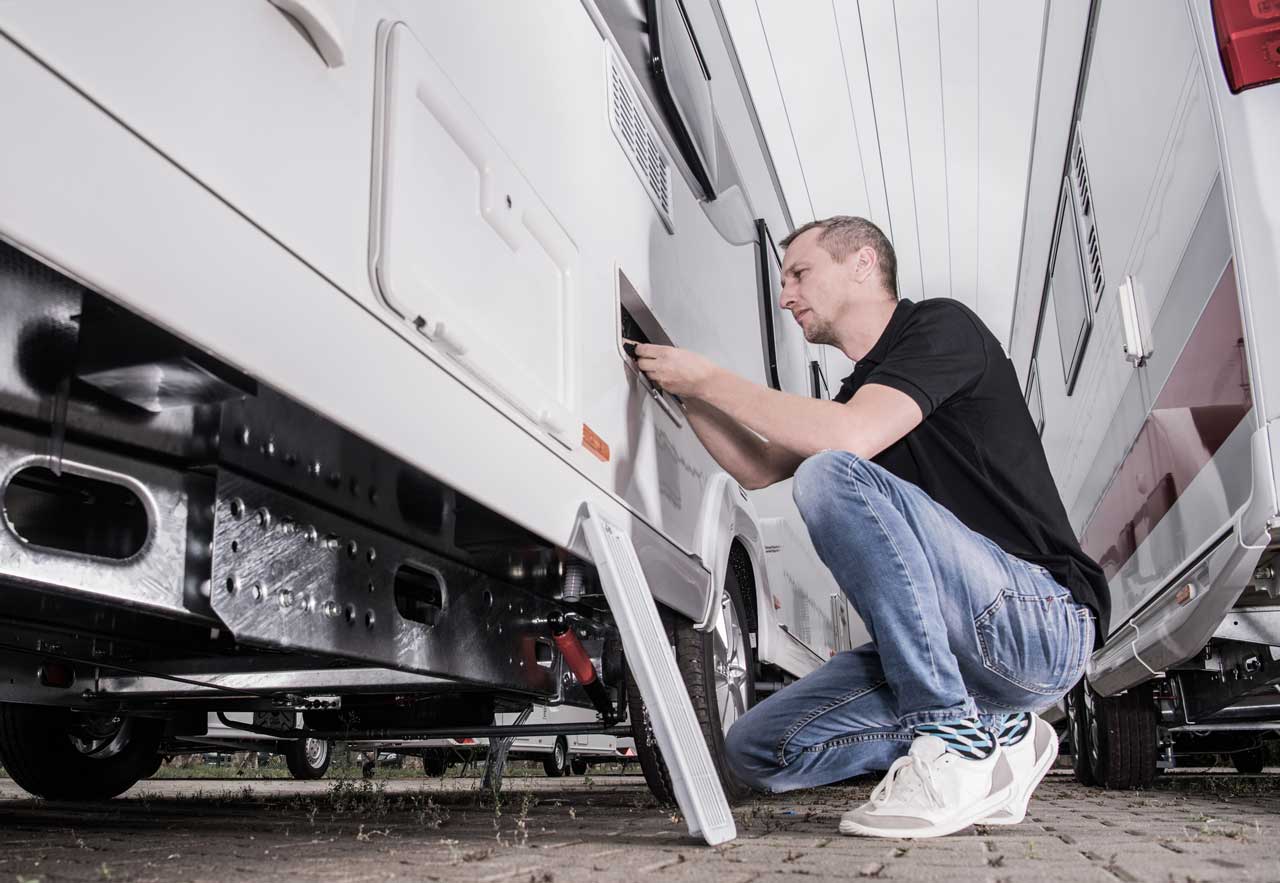How to Avoid Common Mistakes When Storing Your RV or Trailer Long-Term
Storing your RV properly is essential for maintaining its condition and protecting your investment. For many RV owners, the process might seem as simple as parking it and walking away. However, skipping some vital preparation steps can lead to expensive repairs and long-term damage. Luckily, avoiding these common storage mistakes can keep your vehicle in top shape, whether you’re storing it for weeks, months, or even longer.
Let’s explore six common RV storage mistakes and how to address them effectively.
1. Neglecting Battery Maintenance
One of the most common oversights RV owners make is leaving their batteries connected during long-term storage. Over time, idle batteries can lose charge, leading to sulfation and permanent damage. A lead-acid battery, for instance, can lose up to 5% of its charge per month when not maintained, according to Interstate Batteries.
How to Fix It
- Disconnect your RV’s battery and store it in a cool, dry place. Avoid extremely cold temperatures.
- Use a trickle charger or battery maintainer to keep your battery fully charged without overcharging.
By taking these simple steps, you’ll avoid battery damage and ensure your RV is road-ready when storage ends.
2. Skipping Tire Protection
Leaving tires exposed to sunlight and pressure from sitting in one position for months can lead to flat spots or dry rot. Prolonged exposure to UV rays accelerates tire degradation, especially in hot climates.
How to Fix It
- Use high-quality UV-resistant tire covers to shield your tires from sunlight.
- Place the RV on leveling blocks to reduce the pressure on your tires.
- Rotate the RV slightly during storage to distribute tire weight evenly.
Protecting your tires isn’t just about preventing wear—it’s about ensuring a smoother and safer ride once you’re back on the road.
3. Ignoring Ventilation
Sealing up your RV or trailer completely can lead to moisture buildup, which encourages mold and mildew. Poor ventilation is among the leading causes of interior damage during storage.
How to Fix It
- Leave a window or roof vent slightly cracked open to allow airflow.
- Place moisture absorbers, like DampRid, inside the RV to help control humidity.
Proper ventilation will prevent that musty smell and keep your RV’s interior fresh.
4. Failing to Cover Exposed Surfaces
Prolonged exposure to sunlight can fade paint, crack interiors, and damage RV seals. Over time, UV rays and heat can significantly shorten your vehicle’s exterior lifespan.
How to Fix It
- Use a high-quality, breathable RV cover to protect your vehicle’s exterior and windows.
- Ensure the cover fits properly and isn’t overly tight, which could cause scratching.
An RV cover is a small investment compared to the cost of repainting or replacing weather-worn parts.
5. Overlooking Pest Prevention
Idle RVs are prime real estate for rodents, ants, and other pests looking for shelter. Rodents, in particular, can cause significant damage by chewing wiring or nesting in hard-to-reach places.
How to Fix It
- Seal any potential entry points using steel wool or foam insulation.
- Use pest deterrents, such as peppermint oil or mothballs, in and around the RV.
- Regularly check your RV for any signs of intrusion.
Pests can wreak havoc on your RV quickly, so proactive measures are crucial to keeping them out.
6. Not Cleaning Before Storage
Food crumbs, dirty surfaces, or neglected water tanks can invite pests and cause bad odors. Additionally, dust accumulation and exposure to environmental factors may worsen wear on your RV over time.
How to Fix It
- Empty and clean all water tanks, including black and gray water tanks.
- Remove any perishable items and thoroughly clean the kitchen.
- Wash the exterior to protect the vehicle from dust buildup or corrosion.
A clean RV makes storage hassle-free and ensures you won’t rinse down bugs and grime when it’s time to hit the road again.
Why Proper Storage Matters
By avoiding these common mistakes, you’ll not only prolong your RV’s lifespan but also save yourself time and money in the long run. Proper storage preparation eliminates costly repairs and ensures your RV is in peak condition when you’re ready to travel. It also ensures a smoother, stress-free start to your next adventure.
If you’re storing your RV in an outdoor facility, such as a location in sunny Southern California, following these steps becomes even more critical. A little preparation goes a long way toward shielding your RV from weather, pests, and other potential damage.
Final Thoughts
Proper RV storage is about more than just parking your vehicle—it’s about protecting your investment and preserving its value. By taking the time to address these common storage mistakes, you’ll have an RV that’s ready for your next trip whenever you are.
For more tips and detailed advice, be sure to consult resources from experts like the RV Industry Association or your local storage facility.
Got questions or ready to store your RV? Reach out to us today and see how our facilities can support your RV’s storage needs!

